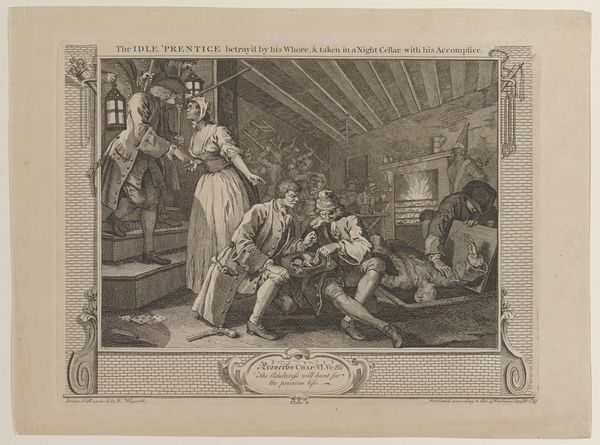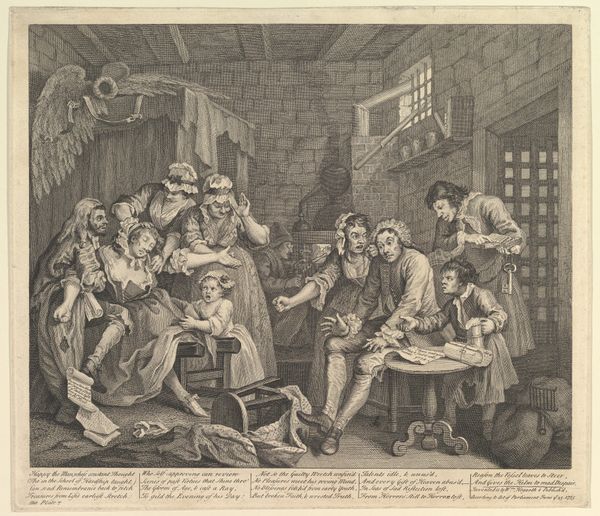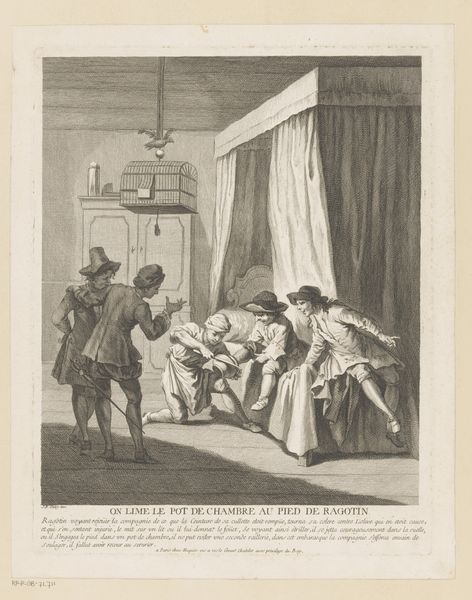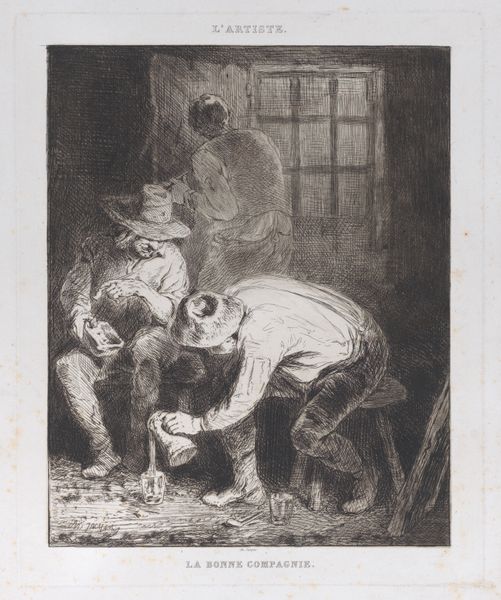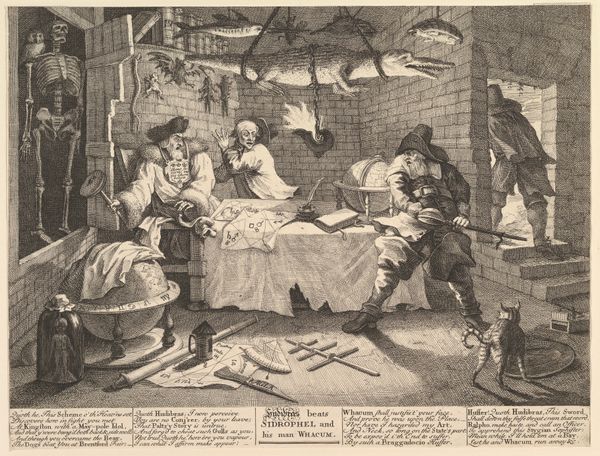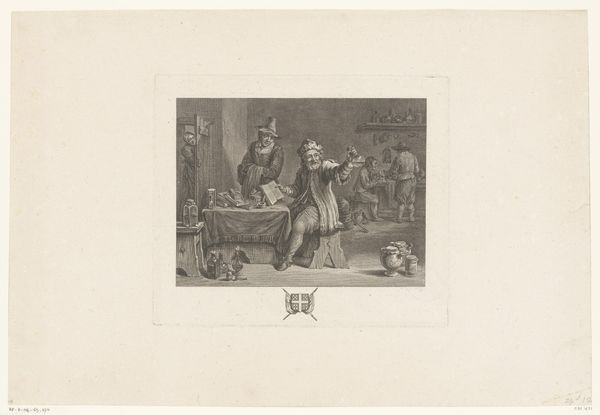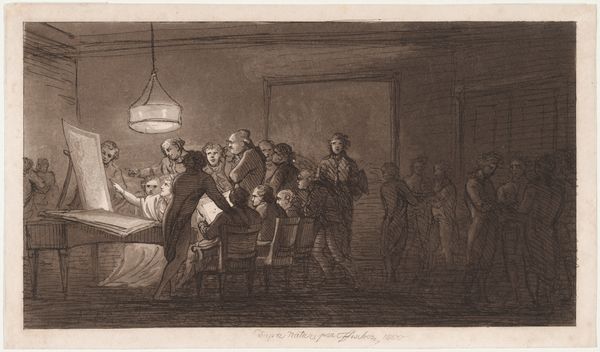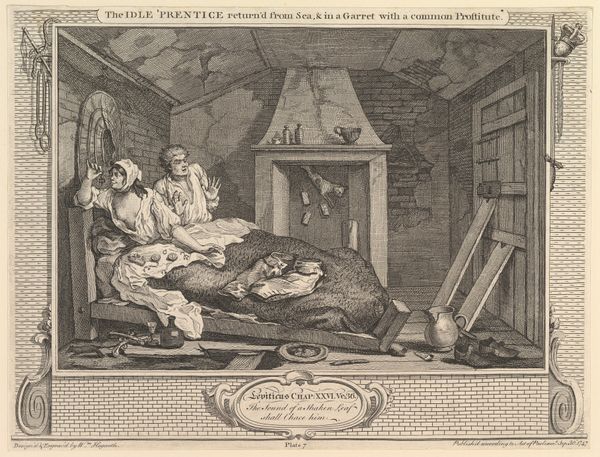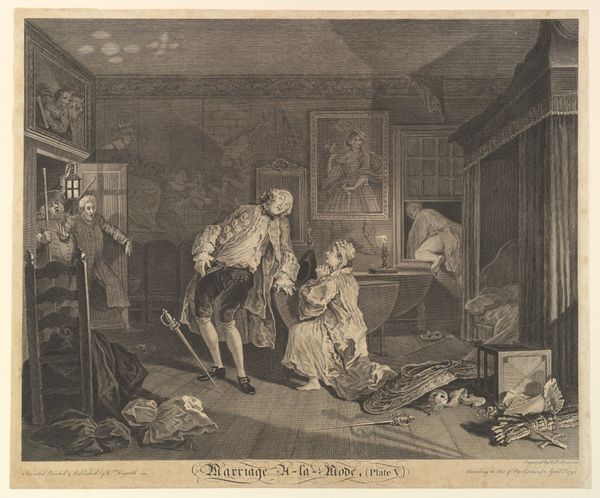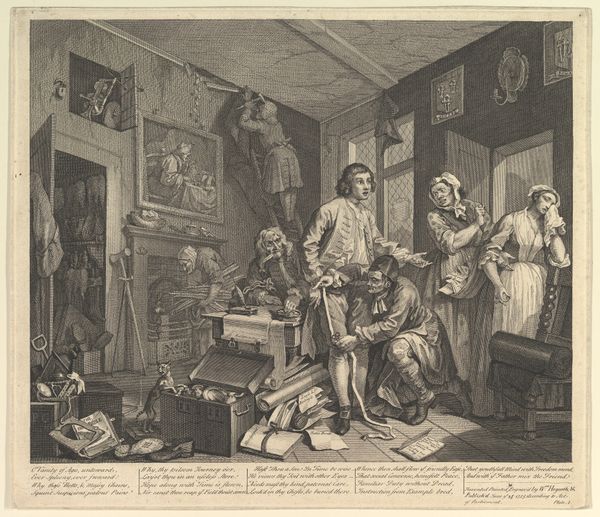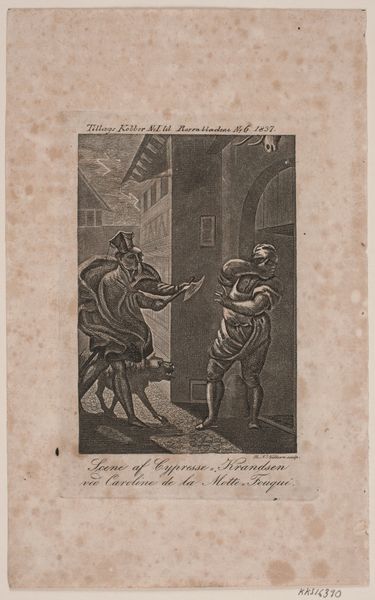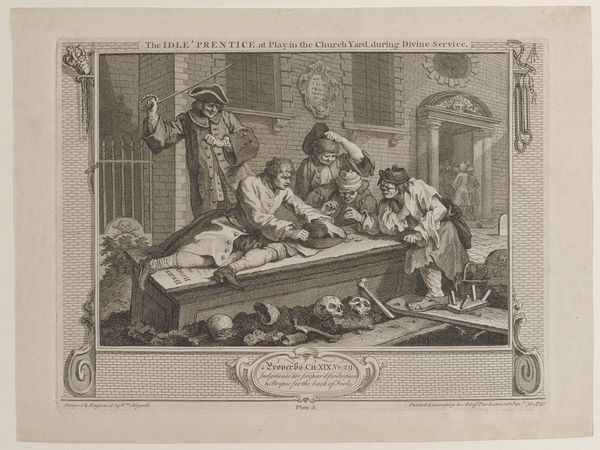
The Idle 'Prentice Betrayed by his Whore and Taken into a Night Cellar with his Accomplice: Industry and Idleness, plate 9 1747
0:00
0:00
drawing, print, engraving
#
drawing
#
narrative-art
#
baroque
# print
#
15_18th-century
#
genre-painting
#
engraving
Dimensions: sheet: 10 1/4 x 13 5/8 in. (26.1 x 34.6 cm)
Copyright: Public Domain
Editor: So, this engraving, "The Idle 'Prentice Betrayed by his Whore," created in 1747 by William Hogarth, plunges us into quite the scene. The detail is astonishing. It feels dark, obviously, morally murky too. What first strikes you when you look at this piece? Curator: You know, it’s the controlled chaos that grabs me. Hogarth isn't just telling a story; he's conducting an orchestra of social commentary. You see the young apprentice caught in this debauched den, but look at the layers—the collapsing figures, the knowing gazes. Do you get a sense of the broader commentary on industry versus idleness? Editor: Yes, absolutely. I noticed the title includes "Industry and Idleness, plate 9", indicating this is part of a series of artworks. So Hogarth clearly emphasizes the "idle 'prentice" contrast as his subject spirals into ruin and, if I am not mistaken, hints to moral degradation. Is this almost a caricature, meant to shock and warn? Curator: Exactly! Hogarth wields caricature like a weapon. He exaggerates vices to expose truths, doesn't he? Consider this the 18th-century equivalent of a reality TV intervention, designed to both entertain and edify, if you catch his drift. The details, like the discarded playing cards and the overflowing chamber pot, are practically screaming about the consequences of moral laxity. The biblical inscription drives the nail! Editor: That makes so much sense! Before this conversation I interpreted this scene just as an unfortunate portrait of an evening gone wrong. I will remember that art provides much more than what meets the eye and Hogarth makes that vividly clear. Curator: I’d add one thing, Editor! The fun lies in spotting our own follies reflected in his satirical mirror. Each glance reveals layers of societal hypocrisy that make the image, quite unexpectedly, resonate.
Comments
No comments
Be the first to comment and join the conversation on the ultimate creative platform.
